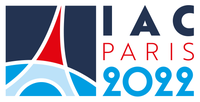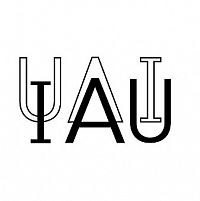› IAU Symposium 323: Planetary Nebulae - Multi-wavelength Probes of Stellar and Galactic Evolution,
The planetary nebula (PN) community has had a history of very successful IAU symposia, beginning in 1967 with IAU Symp. 34 held in Tatranska Lomnica (Czechoslovakia), followed in 1977 by IAU Symp. 76 in Ithaca, NY (USA), IAU Symp. 103 in London (England) in 1982, IAU Symp. 131 in Mexico City (Mexico) in 1987, IAU Symp. 155 in Innsbruck (Austria) in 1992, IAU Symp. 180 in Groningen (Holland) in 1996, IAU Symp. 209 in Canberra (Australia) in 2001, IAU Symp. 234 in Hawaii (USA) in 2006, and IAU Symp. 283 in Puerto de la Cruz (Spain) in 2011.
The IAU PN working group (the WG) had met in Riviera Maya (Mexico) in October 2013, during the "Asymmetric Planetary Nebulae VI" meeting, and decided that the time is mature to propose an IAU PN Symposium to be held in 2016, thus preserving the recent cadence of IAU PN Symposia. The WG considered three valid host offers for the next Symposium, and have selected the proposal by WG member Prof. Xiaowei Liu to hold the next IAU PN Symposium in Beijing (China). The Symposium will be co-sponsored by the Kavli Institute for Astronomy and Astrophysics (KIAA) of Peking University (PKU), and the Department of Astronomy (DoA) of PKU. The WG Chair has received a letter of support from Dr. Liu, Acting Director of the KIAA of PKU and a Chair Professor of Astronomy of the DoA of PKU, showing that reasonable support and funding will be available should a Symposium be approved by the IAU. This will be the first PN Symposium ever held in China, and the first IAU PN Symposium in Asia as well. Xiaowei Liu, a PN researcher and WG member, will co-chair the Symposium with Letizia Stanghellini (WG Chair) and Amanda Karakas (WG member). Together the three Chairs will cover major areas of stellar evolution and theoretical modeling, PN observations, and extragalactic PNe. The remaining of the WG will be part of the SOC to support all areas of the PN field. Xiaowei Liu will be in charge of the LOC as well.
The research field of PNe has been very active since the last Symposium, with more than 600 well-cited publications in the field. The observational papers cover a variety of topics, from space-based multi-wavelength surveys, to the study of rare molecules such as fullerene in PNe, to the use of modern technology such as adaptive optics to refine our knowledge on PN morphology, to extragalactic PNe studied both as chemical evolution probes and dynamical test particles. The observational landscape will be changing dramatically in the near future, and we believe that the proposed PN Symposium should include a perspective of how the future capabilities will advance the field of PN and related objects. We plan discussions on new results of current cutting edge facilities (e.g., ALMA, GAIA) and also on the foreseen advances of PN research in the observational landscape of the 2020s, which will be populated by JWST, and the ELTs. PNe are tightly connected both with their progenitors (AGB stars) and with their progeny (white dwarfs and the ISM). It is thus worth emphasizing these links in a broad sense. The time-domain aspect of stellar and nebular evolution will also be discussed prominently in the next Symposium. Planetary nebulae and related objects can experience considerable changes over months to years. These transients, likely at the heart of the PN phenomenon, will be monitored in numbers with new facilities such as the LSST.
From a theoretical perspective, many exciting results have surfaced in recent years including models of the evolution of dusty AGB stars, the interactions between dusty, slow AGB winds and a companion, and the modeling of the interaction between the interstellar medium and the AGB/PN expansion. These models are vital for the interpretation of observations in the infrared, mm/sub-mm, and radio wavelengths using new and future facilities. Models that include the contrast between the interstellar medium and the PN expansion are also advancing, as are stellar evolution models of an evolved companion such as a red giant or AGB star and a planetary companion. Furthermore, it has become apparent that understanding the uncertain theoretical details of binary evolution is crucial to interpret the diversity of planetary nebulae. There has been much recent work on models of population synthesis studying the numbers of expected planetary nebulae from binary interactions, and the predicted composition of the nebulae.
Since PN are probes of stellar evolution and populations in galaxies and in the intergalactic medium, the proposed Symposium will interest Galactic and extragalactic scientists alike. While the Symposium will focus on PNe, several of the lectures will be of great interest to the broader community researching the interstellar medium, star formation, stellar evolution, galactic chemical evolution, and galactic dynamics. The proposed topics have been selected to include the changes in the field in the past five years, and a future perspective of PN research.
Track this event on your Apple calendar














 China
China